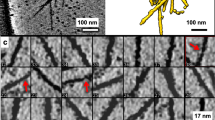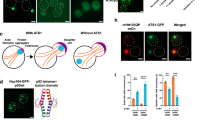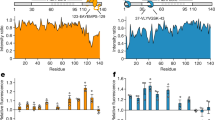Abstract
Protein aggregation and the formation of inclusion bodies are hallmarks of the cytopathology of neurodegenerative diseases, including Huntington's disease, Amyotropic lateral sclerosis, Parkinson's disease and Alzheimer's disease. The cellular toxicity associated with protein aggregates has been suggested to result from the sequestration of essential proteins that are involved in key cellular events, such as transcription, maintenance of cell shape and motility, protein folding and protein degradation. Here, we use fluorescence imaging of living cells to show that polyglutamine protein aggregates are dynamic structures in which glutamine-rich proteins are tightly associated, but which exhibit distinct biophysical interactions. In contrast, the interaction between wild-type, but not mutant, Hsp70 exhibits rapid kinetics of association and dissociation similar to interactions between Hsp70 and thermally unfolded substrates. These studies provide new insights into the composite organization and formation of protein aggregates and show that molecular chaperones are not sequestered into aggregates, but are instead transiently associated.
This is a preview of subscription content, access via your institution
Access options
Subscribe to this journal
Receive 12 print issues and online access
We are sorry, but there is no personal subscription option available for your country.
Buy this article
- Purchase on SpringerLink
- Instant access to full article PDF
Prices may be subject to local taxes which are calculated during checkout



Similar content being viewed by others
References
Kopito, R. R. & Ron, D. Nature Cell Biol. 2, E207–E209 (2000).
Zoghbi, H. Y. & Orr, H. T. Annu. Rev. Neurosci. 23, 217–247 (2000).
Perry, G., Friedman, R., Shaw, G. & Chau, V. Proc. Natl Acad. Sci. USA 84, 3033–3036 (1987).
Kuzuhara, S., Mori, H., Izumiyama, N., Yoshimura, M. & Ihara, Y. Acta Neuropathol. 75, 345–353 (1988).
Davies, S. W. et al. Cell 90, 537–548 (1997).
Perez, M. K. et al. J. Cell Biol. 143, 1457–1470 (1998).
Cummings, C. J. et al. Nature Genet. 19, 148–154 (1998).
Martin, J. B. N. Engl. J. Med. 340, 1970–1980 (1999).
Kazantsev, A., Preisinger, E., Dranovsky, A., Goldgaber, D. & Housman, D. Proc. Natl Acad. Sci. USA 96, 11404–11409 (1999).
Suhr, S. T. et al. J. Cell Biol. 153, 283–294 (2001).
Rajan, R. S., Illing, M. E., Bence, N. F. & Kopito, R. R. Proc. Natl Acad. Sci. USA 98, 13060–13065 (2001).
Nucifora, F. C. Jr, et al. Science 291, 2423–2428 (2001).
Stenoien, D. L. et al. Hum. Mol. Genet. 8, 731–741 (1999).
Kobayashi, Y. et al. J. Biol. Chem. 275, 8772–8778 (2000).
Auluck, P. K., Chan, H. Y., Trojanowski, J. Q., Lee, V. M. & Bonini, N. M. Science 295, 865–868 (2002).
Patterson, G. H., Schroeder, S. C., Bai, Y., Weil, A. & Piston, D. W. Yeast 14, 813–825 (1998).
Chen, D., Hinkley, C. S., Henry, R. W. & Huang, S. Mol. Biol. Cell 13, 276–284 (2002).
Freeman, B. C., Myers, M. P., Schumacher, R. & Morimoto, R. I. EMBO J. 14, 2281–2292 (1995).
Lippincott-Schwartz, J., Snapp, E. & Kenworthy, A. Nature Rev. Mol. Cell Biol. 2, 444–456 (2001).
Nagle, J. F. Biophys J. 63, 366–370 (1992).
Nollen, E. A. et al. Proc. Natl Acad. Sci. USA 98, 12038–12043 (2001).
Paulson, H. L. Am. J. Hum. Genet. 64, 339–345 (1999).
Igarashi, S. et al. Nature Genet. 18, 111–117 (1998).
Trettel, F. et al. Hum. Mol. Genet. 9, 2799–2809 (2000).
Kao, C. C. et al. Science 248, 1646–1650 (1990).
Michels, A. A., Nguyen, V. T., Konings, A. W., Kampinga, H. H. & Bensaude, O. Eur. J. Biochem. 234, 382–389 (1995).
Chen, D. & Huang, S. J. Cell Biol. 153, 169–76 (2001).
Axelrod, D., Koppel, D. E., Schlessinger, J., Elson, E. & Webb, W. W. Biophys J. 16, 1055–1069 (1976).
Ellenberg, J. et al. J. Cell Biol. 138, 1193–1206 (1997).
Gordon, G. W., Berry, G., Liang, X. H., Levine, B. & Herman, B. Biophys J. 74, 2702–2713 (1998).
Acknowledgements
We thank R. Miller (Northwestern University Medical School) and his laboratory for advice and the use of their microscope facility for FRET analysis, S. Gines and M. MacDonald (Harvard University) for generously sharing reagents, C. Jolly, J. Widom, S. Huang and R. Holmgren for advice and comments on the paper, and use of the Cell Imaging Facilities in the Department of Cell and Molecular Biology at Northwestern Medical School and on the Evanston campus of Northwestern University. These studies were supported by grants to R.M. from the National Institutes of Health (NIGMS 38109), the Huntington Disease Society of America Coalition for the Cure, the Hereditary Disease Foundation, a Mechanisms in Aging and Dementia Training Programme from the National Institutes of Aging to S.K., the Netherlands Organization for Scientific Research and an European Molecular Biology Organization Long-Term Fellowship to E.N.
Author information
Authors and Affiliations
Corresponding author
Ethics declarations
Competing interests
The authors declare no competing financial interests.
Supplementary information
Supplementary figure
Figure S1 Model of the dynamic organization of polyglutamine aggregates. (PDF 290 kb)
Rights and permissions
About this article
Cite this article
Kim, S., Nollen, E., Kitagawa, K. et al. Polyglutamine protein aggregates are dynamic. Nat Cell Biol 4, 826–831 (2002). https://doi.org/10.1038/ncb863
Received:
Revised:
Accepted:
Published:
Issue Date:
DOI: https://doi.org/10.1038/ncb863



